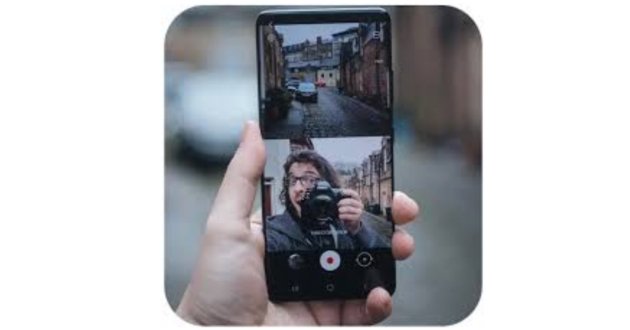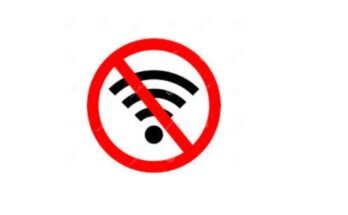Daul camera app for i phone apk
With each iPhone release, Apple continues to push the boundaries of mobile technology, and one of the most exciting features introduced in recent models is the dual-camera system. The iPhone dual-camera app, an integral part of this feature, has transformed mobile photography by providing enhanced photographic capabilities that were once only available in professional cameras. The dual-camera system enables users to take stunning photos with impressive depth effects, improve low-light performance, and capture high-quality images with greater detail and clarity. In this article, we will explore the workings of the iPhone dual-camera app, its features, benefits, and how it has changed the landscape of mobile photography.
The Evolution of iPhone Camera Technology
Apple’s journey with camera technology dates back to the first iPhone, which featured a basic 2-megapixel camera. As iPhones evolved, so did the cameras, with features such as autofocus, flash, and video recording steadily improving. However, the introduction of the dual-camera system in the iPhone 7 Plus marked a major turning point in smartphone photography. This was the first iPhone to feature two rear cameras, each with its own distinct functionality, which offered users a more versatile and professional experience.
The primary camera typically has a wide-angle lens, while the secondary camera on most iPhones has a telephoto lens. This allows for features like optical zoom, portrait mode, and more sophisticated control over the depth of field. As the years passed, Apple continued to refine its dual-camera technology, adding features like Night Mode, Smart HDR, and Deep Fusion, making iPhone cameras some of the most advanced on the market.
How the iPhone Dual-Camera App Works
The iPhone’s dual-camera app works seamlessly with the hardware to enhance the quality of your photos and videos. The two cameras on the rear of the iPhone work together to provide an improved field of view, sharper images, and better performance in low-light situations. Here’s a closer look at how the dual-camera app functions:
- Wide and Telephoto Lenses: The iPhone features two distinct lenses on the back: a wide-angle lens and a telephoto lens. The wide-angle lens is typically used for general photography, while the telephoto lens offers optical zoom capabilities. Users can easily switch between the two lenses to zoom in on objects or capture a wider field of view without sacrificing image quality.
- Portrait Mode: One of the most popular features enabled by the dual-camera system is Portrait Mode. This mode uses the telephoto lens to create a sharp subject focus while blurring the background, mimicking the depth-of-field effect seen in professional portrait photography. The iPhone’s dual-camera app uses sophisticated algorithms to separate the subject from the background, producing stunning images with a professional touch.
- Optical Zoom: Optical zoom allows users to zoom in on a subject without losing any image quality. Unlike digital zoom, which simply enlarges a portion of the image and can lead to pixelation, optical zoom uses the telephoto lens to maintain clarity and detail as you zoom in. This is particularly useful for capturing distant subjects or creating artistic compositions.
- Smart HDR and Deep Fusion: Smart HDR is a feature that combines multiple exposures of a scene to produce more balanced lighting in photos. Deep Fusion, introduced in newer iPhone models, takes this further by combining multiple images at a pixel level, enhancing details and texture in medium to low-light situations. Both of these features work in the background to ensure that photos are captured with the best possible dynamic range and detail.
- Night Mode: iPhones with dual-camera systems also come with Night Mode, a feature that allows users to capture stunning photos in low-light conditions. By using the advanced computational photography techniques, Night Mode takes several long-exposure shots and combines them to produce bright, sharp images, even in dim environments.
The Benefits of Dual-Camera System in iPhones
The introduction of the dual-camera system on iPhones has brought numerous benefits to users. Below are some of the key advantages:
- Improved Image Quality: The dual-camera system allows for sharper, more detailed images. By offering optical zoom and improving low-light performance, users can capture high-quality photos in a variety of settings, from well-lit environments to dimly lit rooms.
- Enhanced Creative Control: The dual-camera system provides more creative freedom. Portrait Mode and optical zoom give users greater control over the composition and depth of their images. Whether you’re taking portraits, landscapes, or close-up shots, the dual-camera app opens up new possibilities for creative expression.
- Better Low-Light Performance: With features like Night Mode and improved sensors, the iPhone dual-camera system excels in low-light conditions. This is especially useful for users who enjoy taking photos at night or in dimly lit settings, such as restaurants or concerts.
- Seamless Integration with iOS: One of the standout features of the iPhone dual-camera system is its seamless integration with iOS. The camera app and software work together to optimize performance, ensuring that photos are captured quickly and efficiently. With automatic adjustments and features like Smart HDR, the app makes it easy for users to take professional-looking photos with minimal effort.
- Advanced Video Capabilities: The dual-camera system also enhances video recording. Users can switch between the wide and telephoto lenses while recording video, allowing for dynamic zooming and better framing. The iPhone’s dual-camera app also supports 4K video recording at 60 frames per second (fps), ensuring that videos are crisp, clear, and smooth.
How to Use the iPhone Dual-Camera App
The iPhone’s dual-camera app is designed to be user-friendly, making it easy for both beginners and experienced photographers to take full advantage of the advanced features. Here are some tips on how to make the most of the dual-camera system:
- Switch Between Lenses: The iPhone camera app automatically detects which lens to use based on the scene, but you can manually switch between the wide and telephoto lenses. To do this, simply tap the 1x or 2x button on the screen to switch between the lenses. The 1x represents the wide-angle lens, while the 2x represents the telephoto lens.
- Enable Portrait Mode: To capture stunning portraits with a blurred background, open the camera app and swipe to Portrait Mode. Once you frame your subject, the app will use the dual-camera system to create a bokeh effect that makes your subject stand out. You can also adjust the lighting effects to create different looks, such as Natural Light, Studio Light, and Contour Light.
- Use Night Mode: When shooting in low-light conditions, the iPhone camera app will automatically switch to Night Mode. You’ll see a yellow Night Mode icon on the screen, and the camera will capture multiple exposures to enhance the details and brightness of your photo. You can adjust the exposure time by sliding the icon left or right, allowing you to control how much light the camera captures.
- Take Advantage of Smart HDR: Smart HDR is enabled by default, but you can manually adjust it in the settings if needed. This feature ensures that photos are well-exposed and detailed, especially in high-contrast situations where both bright and dark areas are present. The app combines multiple exposures to produce a photo with improved dynamic range.
- Try the Telephoto Lens for Zooming: To capture distant objects or to achieve artistic compositions, use the telephoto lens for optical zoom. Tap the 2x zoom button to switch to the telephoto lens. This will allow you to zoom in without losing image quality, unlike digital zoom, which can result in pixelated images.
The Future of iPhone Camera Technology
Apple’s dual-camera app is constantly evolving, with new features and improvements being introduced with each iPhone update. While the current dual-camera systems are already impressive, it’s likely that future models will continue to push the boundaries of mobile photography. With advancements in AI, machine learning, and computational photography, we can expect even better image quality, more advanced editing tools, and enhanced video capabilities.
In addition, as AR (augmented reality) technology becomes more integrated into mobile devices, the iPhone’s camera system may become a key player in the AR space, offering new ways for users to interact with their environment and capture immersive experiences.
Conclusion
The iPhone dual-camera app has revolutionized mobile photography by providing users with professional-grade features, such as optical zoom, Portrait Mode, and Night Mode, all within a device that fits in your pocket. The combination of hardware and software has made it easier than ever to capture stunning photos and videos, whether you’re a seasoned photographer or just someone who enjoys snapping pictures on the go.
As iPhone cameras continue to evolve, it’s clear that the dual-camera system will remain a central feature in Apple’s mobile photography lineup. With each new release, Apple is enhancing the capabilities of its dual-camera app, making it an indispensable tool for anyone who values high-quality mobile photography. Whether you’re capturing breathtaking landscapes, intimate portraits, or moments with loved ones, the iPhone dual-camera app ensures that you’ll have the tools to create photos that stand out.



